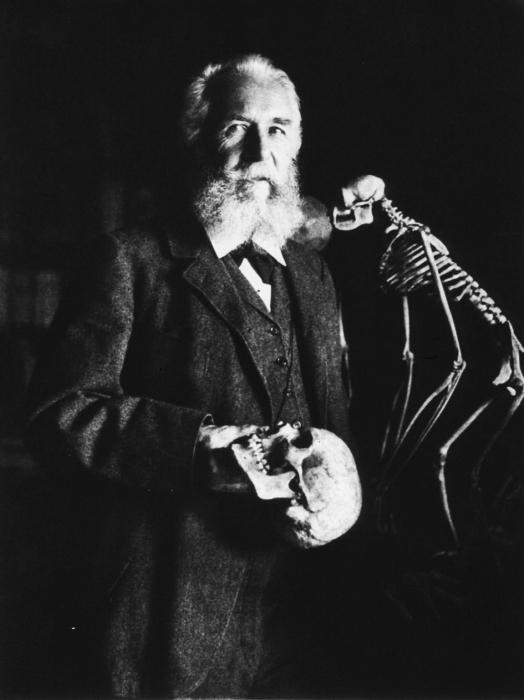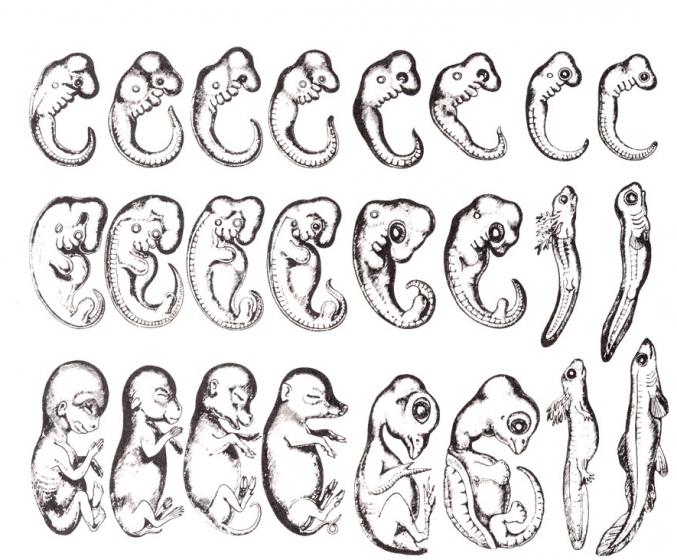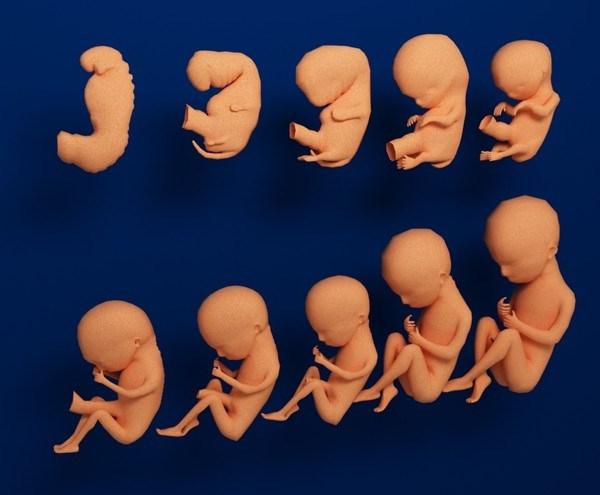The Haeckel-Müller biogenetic law describes the relation observed in living nature - ontogenesis, that is, the personal development of each living organism, to a certain extent it repeats phylogenesis - the historical development of the entire group of individuals to which it belongs. The law was formulated, as the name implies, E. Haeckel and F. Muller in the 60s of the XIX century independently of each other, and now it is almost impossible to establish the discoverer of the theory.

Obviously, the biogenetic law was not formulated immediately. The work of Müller and Haeckel was preceded by the creation of a theoretical basis for the law in the form of already discovered phenomena and other established laws of nature. In 1828, C. Baer formulated the so-called law of germinal resemblance. Its essence lies in the fact that the embryos of individuals belonging to the same biological type have many similar elements of the anatomical structure. In humans, for example, at a certain stage of development, the embryo has gill slits and a tail. Characteristic features in the morphology of species arise only during further ontogenesis. The law of germinal similarity largely determined the biogenetic law: since the embryos of various organisms repeat the developmental stages of other individuals, they repeat the developmental stages of the whole type in general.

A.N. Severtsov later introduced certain amendments to the Haeckel-Mueller law. The scientist noted that during embryogenesis, that is, the stage of embryonic development, there is a similarity between the organs of the embryos, and not adults. So, the gill slots in the human embryo are similar to the gill slots of fish embryos, but not with the formed gills of adult fish.
It is important to note that one of the most significant evidence of the Darwinian theory of evolution is considered directly biogenetic law. Its wording itself hints at its own logical connection with the teachings of Darwin. The embryo during its development passes through many different stages, each of which resembles certain stages of the development of nature, noted from an evolutionary point of view. Thus, each more and more complexly organized individual reflects in its ontogenesis the development of all living nature in terms of evolution.

Psychology also has its own biogenetic law, formulated independently of the biological. In fact, in psychology it is not the formalized law that stands out, but the idea expressed by I. Herbart and T. Ziller about the similarity of the development of the psyche of the child with that of humanity in general. Various scientists have tried to substantiate this theory from different points of view. Mr. Hall, for example, resorted directly to the Haeckel-Mueller law. He said that the development of a child, including from a psychological point of view, is determined exclusively by biological prerequisites and repeats evolutionary development in general. One way or another, today the idea is not unequivocally proven. In psychology, there is still no biogenetic law as such.